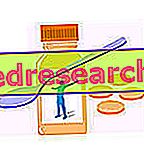Diabetixo patient feeding
The foods for diabetics are the same as those expected in a healthy and balanced diet; the substantial difference between the diabetic's diet and that of the healthy subject is the lower tolerance with which we deviate from the recommendations contained in the guidelines for:
- Frequency of consumption of foods rich in simple refined carbohydrates with a high glycemic index
- Portions of the same
Two simple tips related to the consumption of foods for diabetics may seem insufficient, but in principle they represent the two cornerstones of food therapy for hyperglycemia control.

Which foods to choose?
As already mentioned, diabetic foods are the same as those expected in a healthy and balanced diet. To be precise, even consumption frequencies and portions do not differ much from the guidelines for a balanced diet; however, common sense leads us to reflect on how the lifestyle of a diabetic can reproduce these habits: not at all, so much so that more often than not the choice of therapy for diabetic foods drastically moves away from the habits of these subjects. In fact, excluding genetic factors, often responsible for hormonal or receptor alterations, the pathogenetic components of type 2 diabetes mellitus are:
- Diet too rich in carbohydrates, especially simple refined and / or complex with high glycemic index (both consumption frequencies and portions too high)
- Excessive calorie intake compared to the level of physical activity (LAF)
- Incorrect allocation of meals with preference for abundance in the evening hours
- Low consumption of vegetables, especially raw, and its insufficient intake of HYDRO-SOLUBLE dietary fiber and antioxidants
Parallel diseases that often afflict diabetics:
- Overweight or obesity
- dyslipidemia
- Hypertension
- Metabolic syndrome
- Related secondary complications
Diabetic foods must provide adequate amounts of carbohydrates, limiting excess in the diet. The breakdown of carbohydrates provides a simple 10-12% share and about 50% complex; they must be distributed in the 5 daily meals, taking into account that peripheral sensitivity to insulin is greater in the morning than in the evening hours, and that during sleep the body reduces energy expenditure making the post-prandial glycemic control less effective. In the diet, significant amounts of dietary fiber must be present in association with carbohydrate foods (eg vegetables in first course dishes or side dishes together with bread), in order to modulate intestinal absorption and optimize glycemic control; to reach 30g / day of dietary fiber it is advisable to use cereals or their integral type derivatives.
To date, some professionals advise to freely consume fruit and vegetables as they mainly supply fructose to the detriment of glucose; this habit is not entirely correct. Fructose is insulin-independent ONLY within certain blood concentrations, beyond which insulin secretion becomes inexorable. Therefore, the consumption of fruit and some vegetables particularly rich in simple carbohydrates, such as potatoes, carrots and red and yellow peppers, MUST be kept within certain portions. Furthermore, although this monosaccharide is characterized by a low glycemic index (thanks to the slow conversion to glucose), it also contributes to increasing the total glycemic load within the main meals. Finally, it is advisable to drastically reduce or eliminate all the confectionery production foods, allowing the consumption of honey and / or jams exclusively in breakfast.
Among the food recommendations for diabetics it is essential to eliminate all alcohol sources due to the toxic properties that this nerve manifests at all tissues, and the negative action it plays in insulin control.
As for the diabetic foods produced on an industrial level, these are characterized by:
- absence of added sugars;
- replacement of traditional sweeteners (sugar and honey) with artificial sweeteners (polydextrose, acesulfame k, sucralose, tagatose, aspartame, saccharin, etc.) or polyalcohols (mannitol, xylitol, sorbitol, etc.);
- addition of bran or other sources of fiber (such as inulin);
- reduction of fat and calories content, compensating for the deterioration of organoleptic characteristics through the use of thickeners, such as guar gum, arabic gum, carob flour, alginates and xanthano gum;
- possible fortification of the product for diabetics with vitamins and minerals (for example chromium picolinate).



